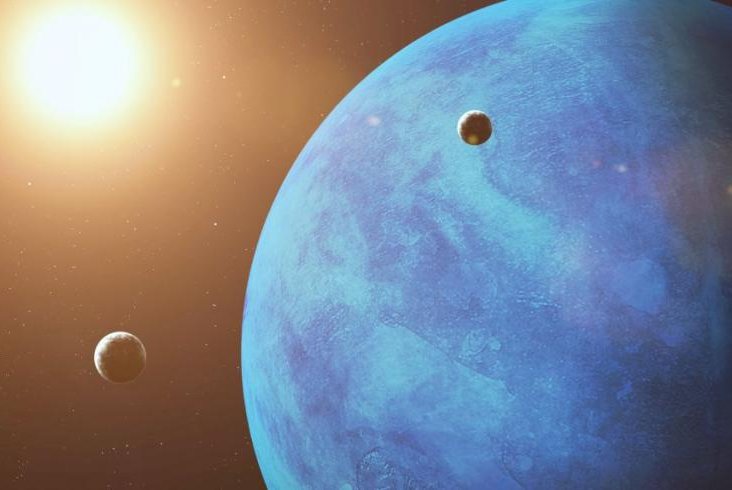An artistic rendering shows the sun shining on Neptune, the most distant planet in the solar system. New research suggests solar cycles and cosmic rays explain oscillations in the cold blue planet's atmosphere. Photo by Oxford University
OXFORD, England, July 22 (UPI) -- Astronomers have been monitoring the oscillating brightness of Neptune's atmosphere for the last 40 years. Using the data, a new study in the journal Nature Communications attempts to explain the planet's unique atmospheric wobbles.
It takes 165 years for Neptune to complete a single orbit around the sun. That means each season on the distant blue planet lasts about 40 Earth years.
Scientists say Neptune's slow seasonal shift over the last 40 years explains some of the periodic changes in the planet's brightness -- but not all.
"Neptune's atmosphere contains clouds made of a range of substances, such as ammonia and methane, whereas clouds on Earth are almost always made of water," researcher Karen Aplin, a physicist at Oxford University, explained in a news release. "Neptune's atmosphere is also a lot colder than ours -- around negative 170 degrees Celsius -- because it receives 900 times less sunlight. Despite this, the Sun can still affect its clouds in subtle ways."
These subtle ways include wobbles unexplained by the planet's seasonal transition. Scientists have previously offered two hypotheses for Neptune's cloudy wobbles. Some scientists claim the sun's 11-year activity cycle is the cause, while others suggests space-based particles called cosmic rays -- also influenced by the solar cycle -- are to blame.
"Using the different physics of the two mechanisms, we showed that the combined effect of the two 'rival' hypotheses explained the changes in cloudiness more successfully than each would do individually," Aplin confirmed.
Both small changes in the sunlight being absorbed by Neptune's clouds and the periodic bombardment of high-energy radiation explain the fluctuation in Neptune's atmospheric brightness.
Researchers were able to confirm the influence of cosmic rays by looking at data collected by the Voyager 2 probe, which explored the Neptunian system in the late 1980s.
"We were able to compare both cosmic rays and clouds at Neptune and show that they had the same fingerprint," Aplin said. "We were therefore able to confirm the effects of cosmic rays in planetary atmospheres."















